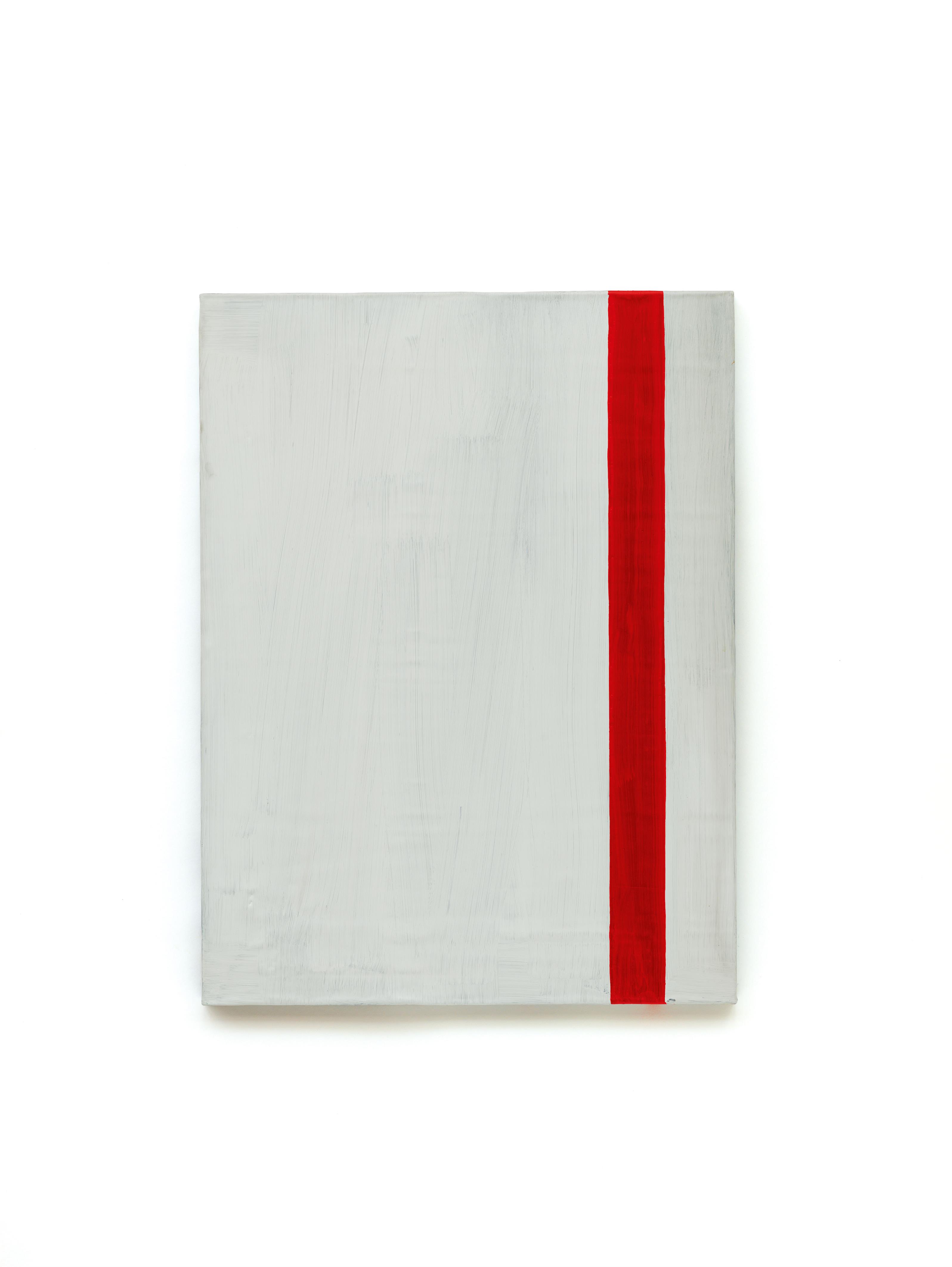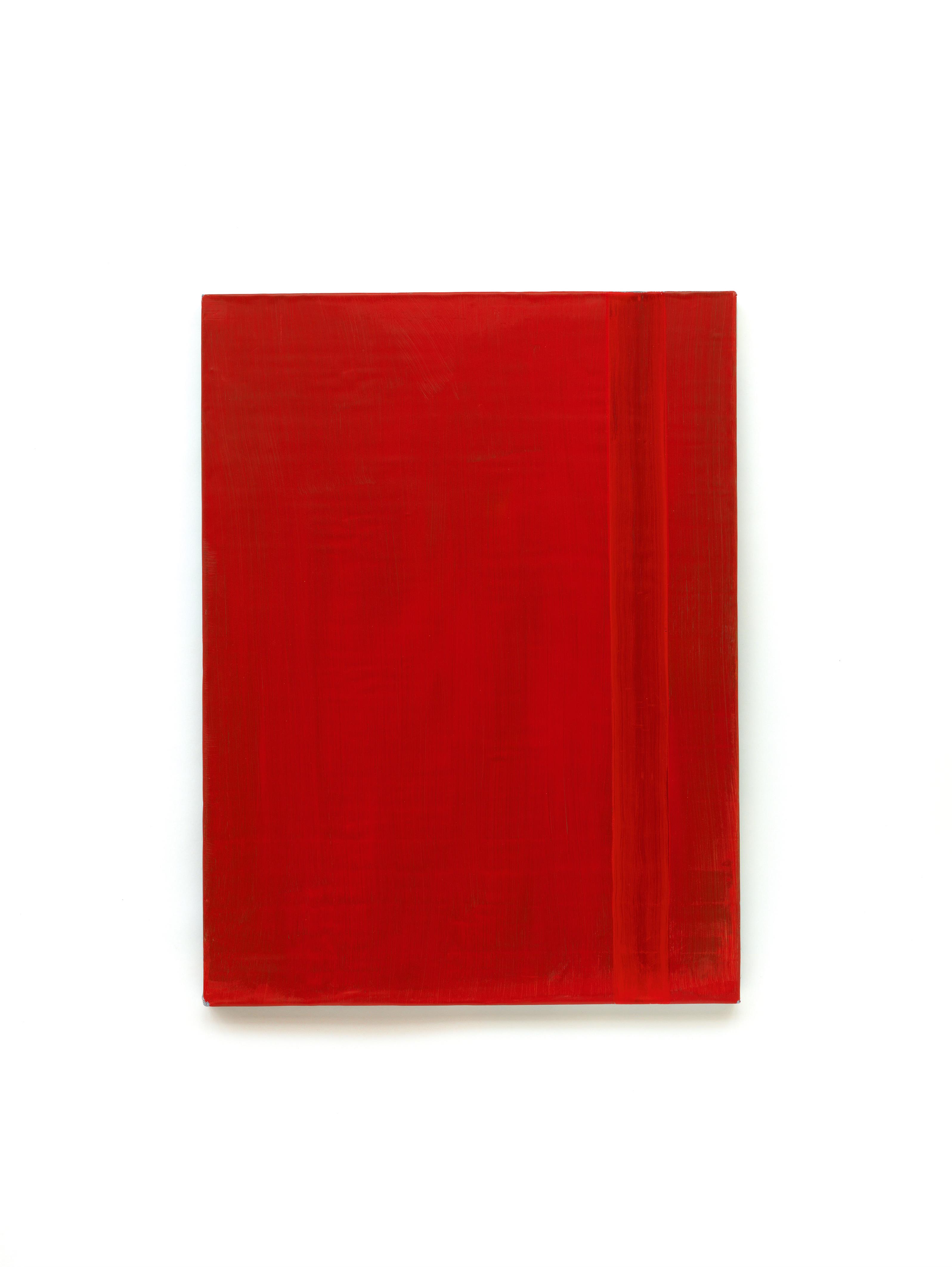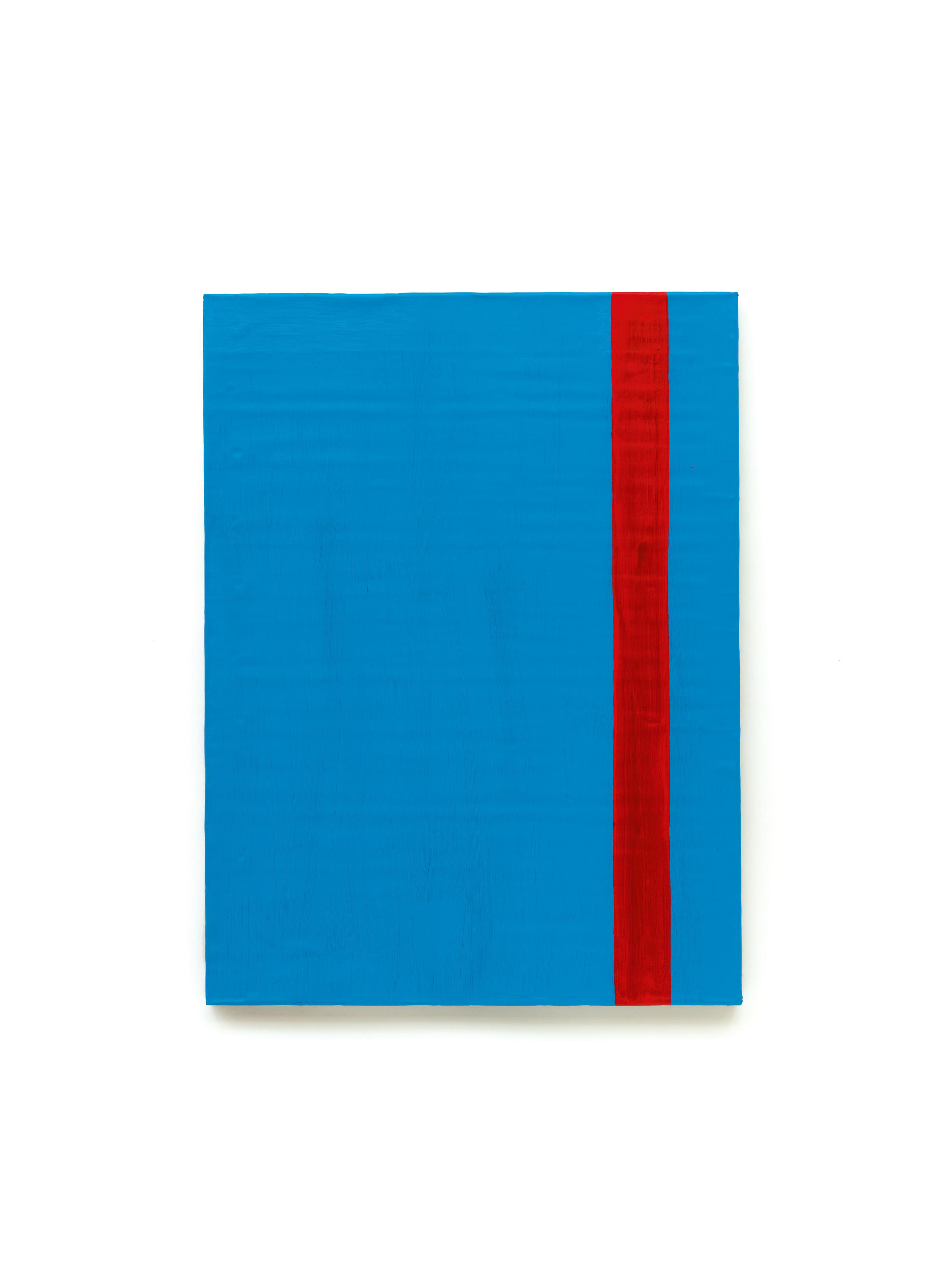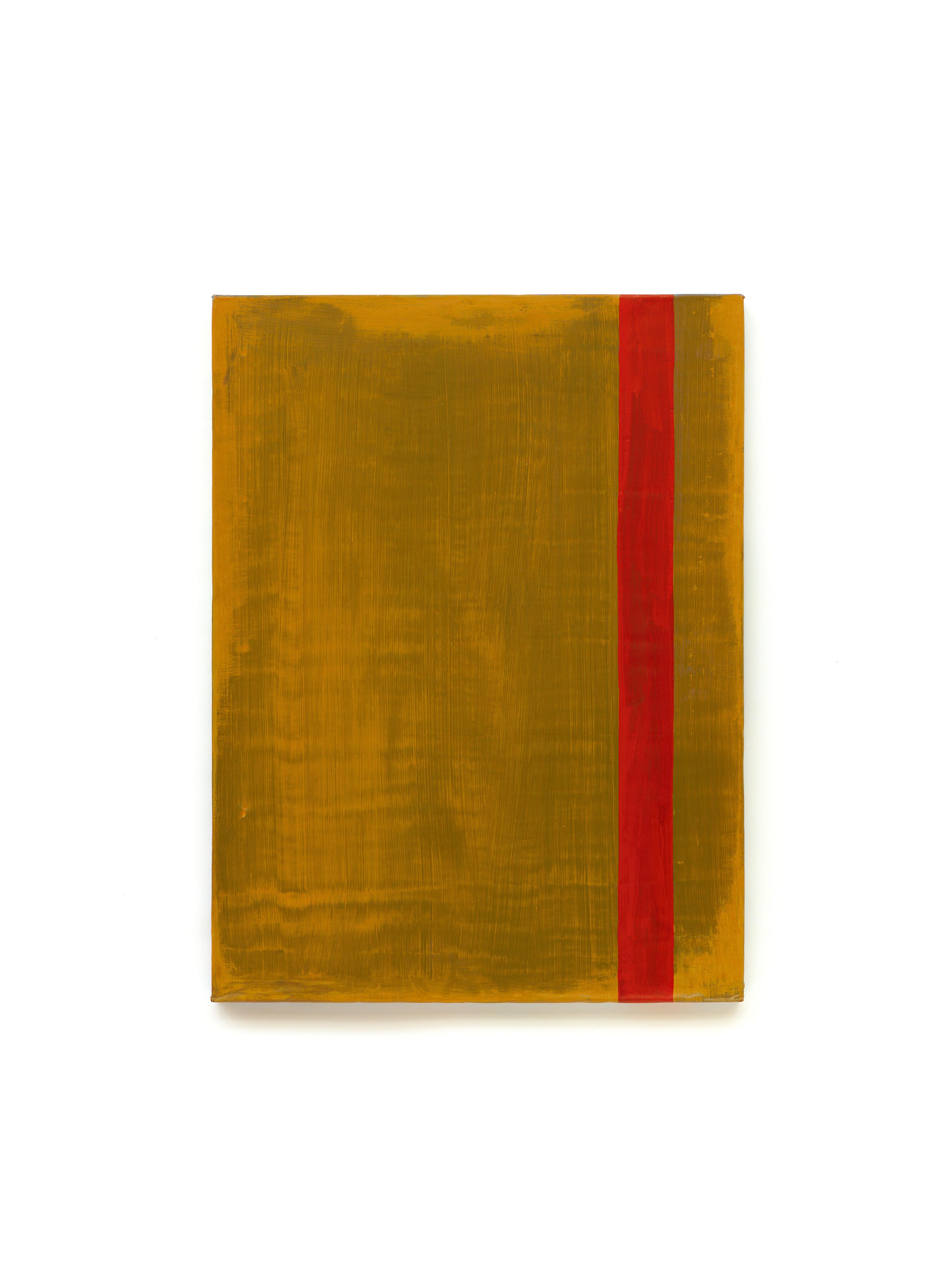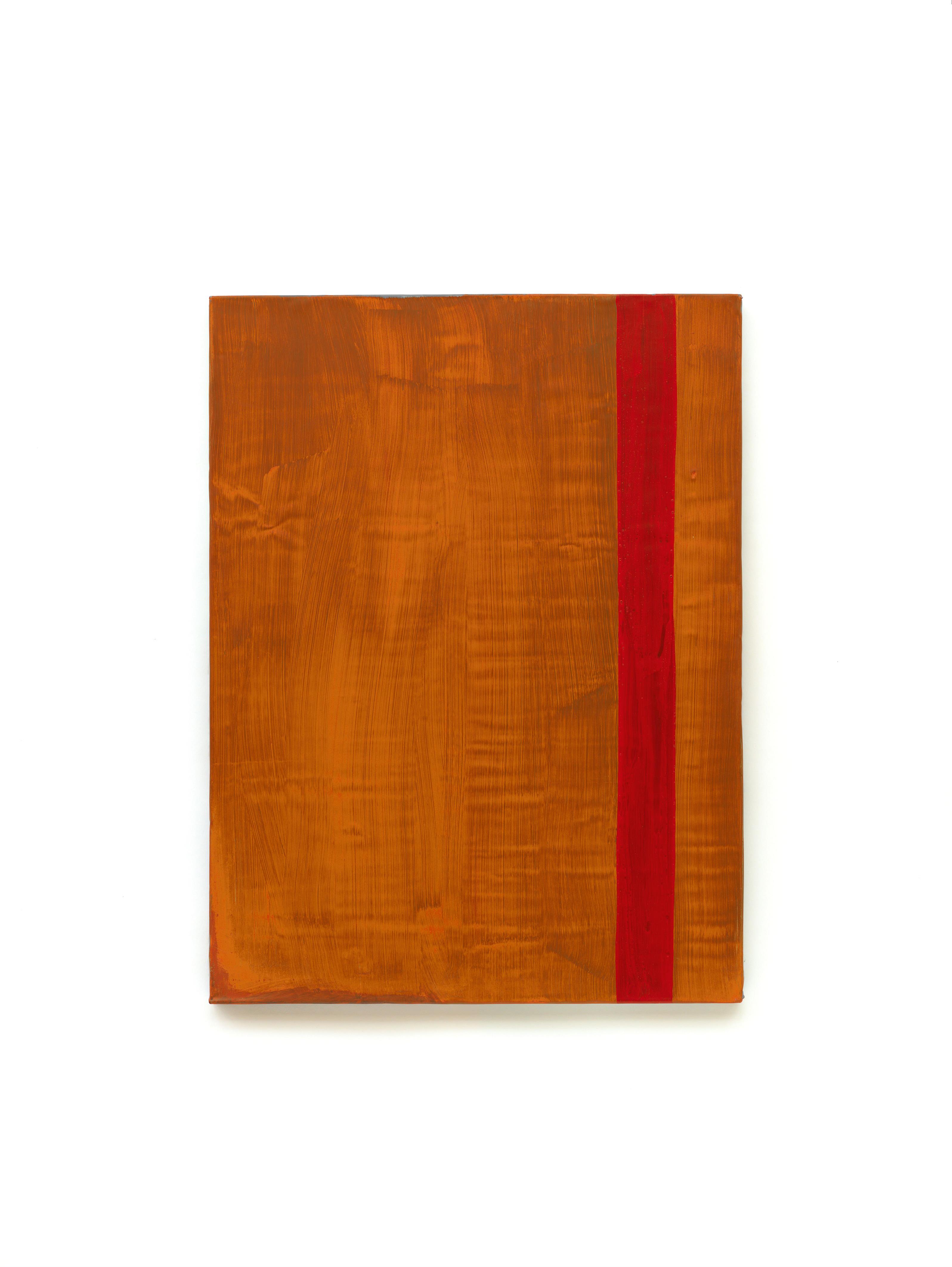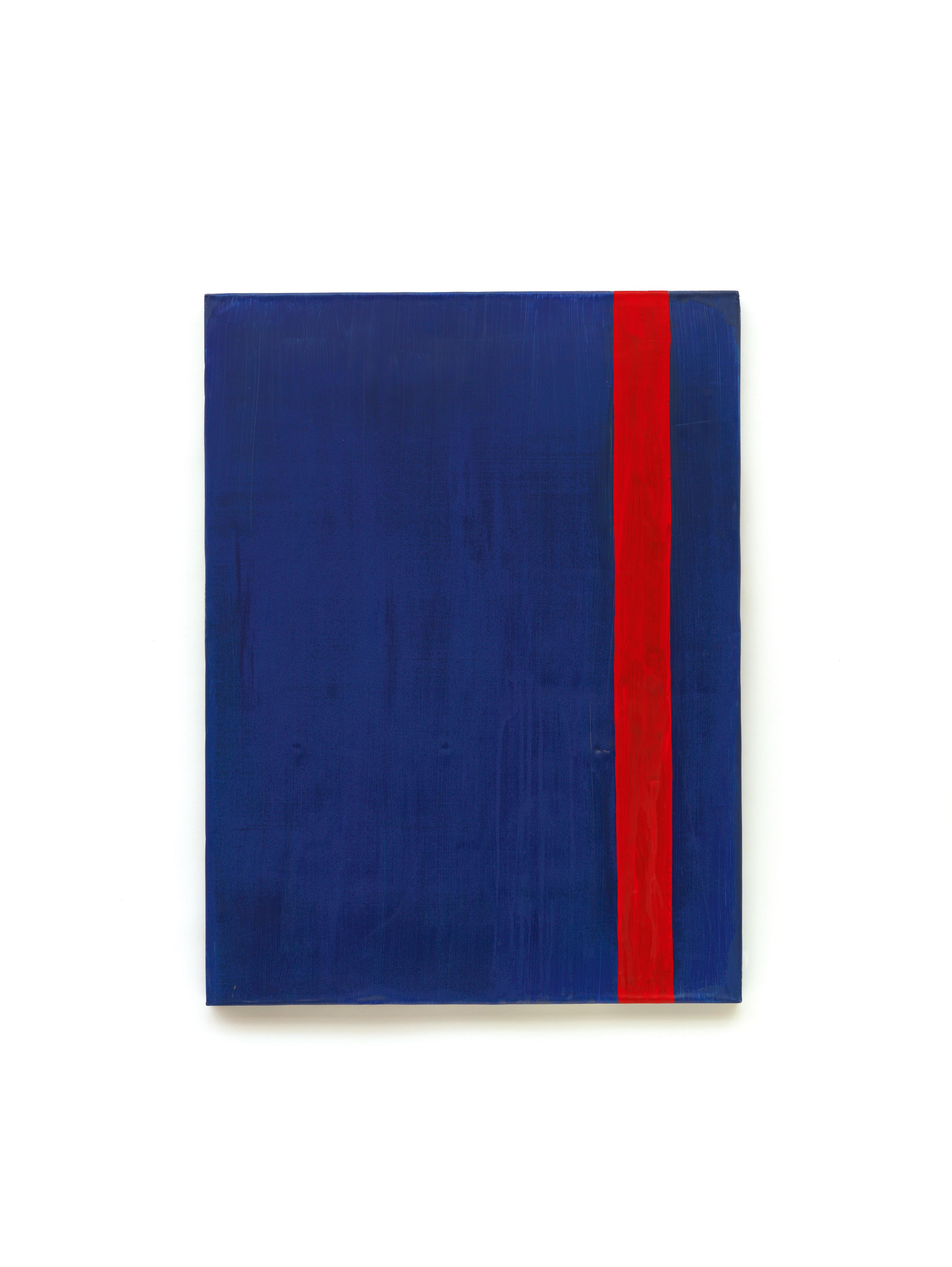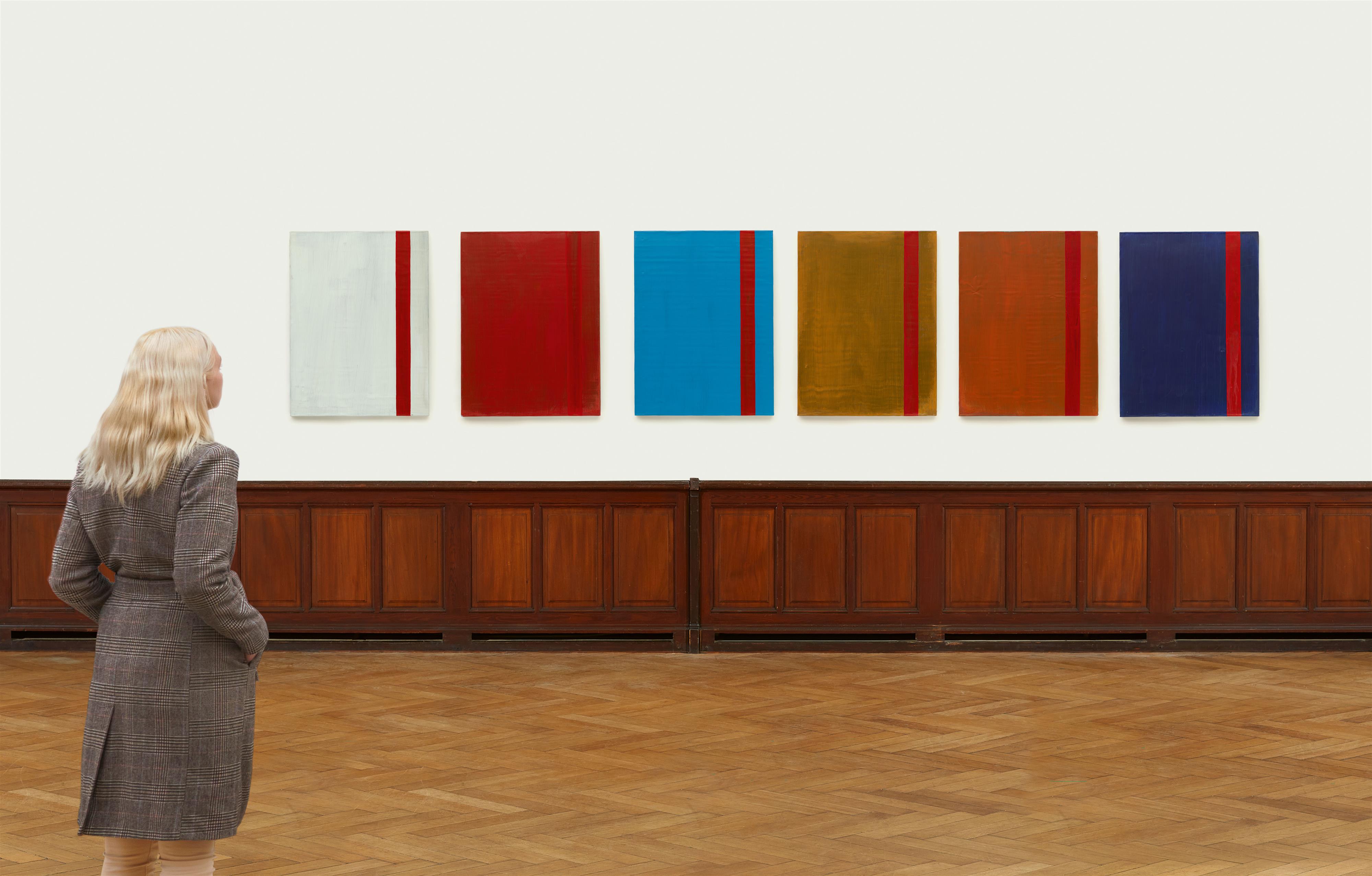Günther Förg
Untitled
1989
6-part work: each acrylic on lead on wood. Each 80 x 60 cm. Framed in studio frame. Each signed, dated and inscribed 'Förg 89 22/89' and consecutively inscribed from 'A' to 'F' verso on wood.
The basic characteristics of Günther Förg’s painterly orientation were already formed during his academic period in the 1970s. From the start, he prescribed himself to a minimalist abstraction in terms of a new beginning free of interpretive ballast with the physical presence of painting taking centre stage.“Förg thus began his painting when abstraction actually no longer had anything to do with abstracting, when the materiality of the paint, the materiality of the picture carrier or the pigment on the wall were the decisive factors.” (Siegfried Gohr, quoted from: Günther Förg. Make it new, Recklinghausen 2004, p.58). He explored means of expression with painting surfaces of aluminium, copper and lead that blurred the boundaries between painting and object art; later he continued this path into three-dimensionality with bronze sculptures and painted plaster reliefs. The surrounding space is also of decisive importance for his painting: he conceives his pictures and picture series as spatial installations, and his wall paintings thus also take direct possession of the space.
From the second half of the 1980s, Förg dedicates himself particularly to the lead pictures. They are his most well-known work group, in which the materiality of the chosen material emerges especially powerfully. The easy malleability of the heavy metal, which made it popular and versatile as a material in earlier times, was also exploited by Förg by rolling it into sheets and stretching it over a wooden frame instead of canvas. “Förg transformed these materials and their inherent differences – lead – wood – painting materials – in a diffuse spatiality. Something like a sounding board emerges without perspective, that shakes the strict truth of geometric composition. It was above all the discovery of lead that opened up the new possibilities as a counterpart to paint. Rare for an artist, this material captivates above all two characteristics: on the one hand it is particularly heavy, and on the other, particularly vulnerable.” (Siegfried Gohr, quoted from: ibid, p.63). Subsequently the inevitable irregularities that occur during the process of stretching, in the form of small bulges, dents and scratches, create a unique surface each time which has an unmistakeable patina. These scars and marks that characterise the surface affect the multi-layered charisma and individuality inherent in these pictures. With its raw material character, the lead appears either directly, because parts are unpainted, or indirectly under the painted layer, giving the works an archaic depth. In the reception of these artworks, the symbolic content always adds a layer of significance, in which the lead material is charged due to its historical fields of application and attributed properties. Quite sombre associations of war equipment, heavy industry and alchemical experiments can resonate subliminally. In the extraordinarily beautiful six-part series offered in this auction, the unusual material remains hidden under the visible surface and shines through only subtly. The six individual vertical-format pictures show closed monochrome colour surfaces, each crossed in the right-hand quarter by a broad vertical line in dark red – an element that visually connects the works in reference to the proverbial ‘red (common) thread’. The irregularities of the lead sheets form a painting ground that exhibit similarities to the traces of use of a historical artifact or to something that has grown naturally, depending on how it is read. The irregular application of paint with its interplay of slightly transparent and opaque sections and the choice of colours reinforces this character. Warm and cool tones balance each other out in their spatial effect; the red and brown tones evoke closeness, the cool white and blue tones create a sense of distance. Lead ground and acrylic paint enhance each other through the contrasts of density and heaviness on the one hand, and permeability and lightness on the other.
Günther Förg’s painting is influenced by numerous impulses that he found in Constructivism and Abstract Expressionism, in the American colour field painting of Barnett Newman and in the Minimalism of art colleagues such as Blinky Palermo. It is crucial to note, however, that in the processing of the pictorial ideas he picked up there, Förg is more concerned with the adoption of formal aspects that particularly appeal to him, and less with content-related demands and connections. Therefore the laconic nature of his pictorial interpretations is often thematised, and in the end, these models play only a limited role: Förg’s practice reaches an entirely individual painterly intensity from within itself, which is not reached solely through the independent sovereign mastery of composition and colour, but above all through the lively and sensual presence with which he is able to charge his pictures.
Certificate
We would like to thank Michael Neff from the Günther Förg Estate for kindly confirming the authenticity of this work.
Provenance
Galerie Bob van Orsouw, Zurich; private collection, North Rhine-Westphalia


